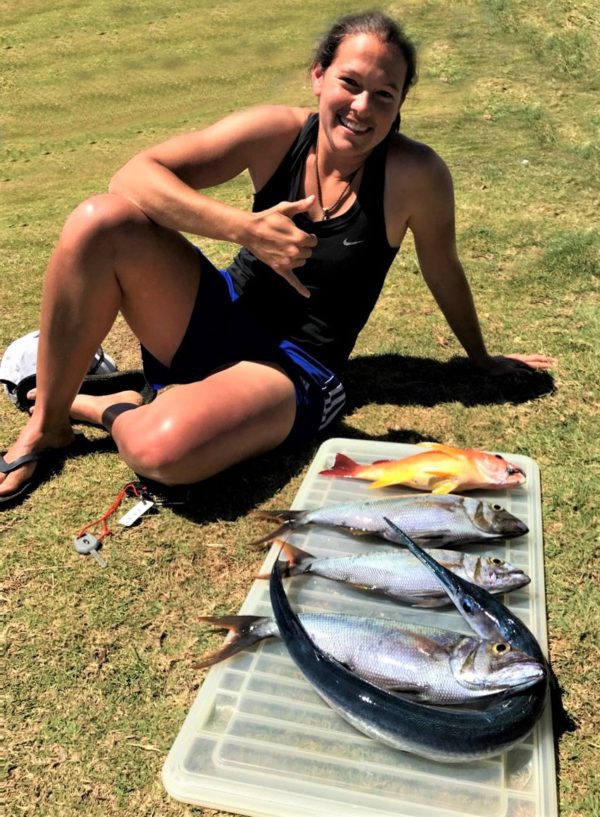

Some Species seem incredibly exotic and rare the first time you see them but turn out to be very common in Hawaii’s beautiful waters. The waters of Hawaii are RAMMED with fish and any snorkel for even a moderate length of time over varied terrain or reef will reveal a plethora of fish species mostly bright, colorful, and wonderful to watch, first, we focus on the most common, these can be seen almost every time you hop in. If you want to see Turtles in Maui check out our guide here Unfortunately, these Turtles have not made as dramatic a comeback as the Honu, so you are unlikely to encounter them. The Honu is only one of several species found in the Hawaiian Islands, others being: While obviously not a fish we needed to mention these incredible gentle Creatures in our list. And these efforts really paid off and Now Hawaiian Green Sea Turtles, or Honu, Are everywhere. Huge efforts were put into protecting them after we nearly decimated them. RUV comparisons, to predator counts between different diver-based methods and cameras.Turtles are thankfully VERY common in Hawaii Now. We also have several draft manuscripts in varying stages of completion, ranging from BRUV vs. We’re currently either processing or analyzing mesophotic BRUV imagery collected around Tutuila, American Samoa (collected in 2012) and Guam (2014), similarly looking at a range of questions that we penned for the Hawaiian Archipelago. Can we expect any follow-up on this work? Things changed through the years from lessons learned, ranging from the types of lines and floats you use and ways of dealing with camera station hang-ups, to streamlining/simplifying stratified random surveys to keep from trying to “do too much”. Shoestring budget and youth worked well at first…but now, I’d go with readily available haul-back solutions, along with using more miniaturized, off-the-shelf tech which is readily available. I first started deploying BRUVS using a hand-cranked Harken windlass.

However: it was working with Steve Lindfield in 2010 (my first exposure to BRUV surveys) in Guam and the CNMI that opened my eyes what we could do in the Hawaiian Archipelago.Īny important lessons learned (through mistakes, experience or methodological advances)?

They all played a major role, which would have made this work difficult (nigh on impossible) without their help. There are many…numerous interns, scientists, and ship/deck departments. Other than your co-authors, with whom would you like to share credit for this work? The juvenile opakapaka (Pristipomoides filamentosus) showing up at a few sites along the Maui-Nui Halimeda beds come a close second. Any time sharks showed up in the footage was cause for excitement. We surveyed a handful of sites along one ridge, which were teeming with fishes, were structurally complex, and had a tiger shark cruising through. With its deep valleys, waterfalls, and sea cliffs, the scenery was incredible.īelow water? The mesophotic ridges running between Maui and Lanai. What was your favorite research site in this study and why?ĭifferent answers, depending on whether you’re looking above or below water.Ībove water? All of the sites around northern Molokai. Finish lines can seem so far away from a project’s original inception.Ī grey reef shark (Carcharhinus amblyrhynchos) tastes the bait arm off the coast of Maui (68 m depth) The day that the paper was published in Frontiers of Marine Science, Coral Reefs. What was the most memorable moment in undertaking this study? These older systems were considerably heavier than the newer tech available today. Everything had to be hand-pulled up from the bottom. The electric windlass failed right as we began our BRUVS haul-back. If there was a single, standout memory: we had three BRUVS deployed to 100 m, along one of the ridges that runs between Maui and Lanai. Around the Maui-Nui area, there were some days when you’d see the wind line moving through ~ 1 – 2 PM, knew that there really wasn’t a lee to tuck into, and that the next few hours were going to be a rough-go. These ranged from hiccups in international, bulk shipping of BRUV cameras and housings between Hawaii and Australia (e.g., cameras misplaced during one shipping cycle, and were eventually tracked down to a wayward facility in British Columbia after missing for 10 days!) to some pretty bumpy days of BRUV sampling. There were many, in varying degrees of scale. What was the most challenging aspect of your study (can be anything from field, lab to analysis)? “Using BRUVs to understand Hawaiian mesophotic reef fish assemblages”


 0 kommentar(er)
0 kommentar(er)
